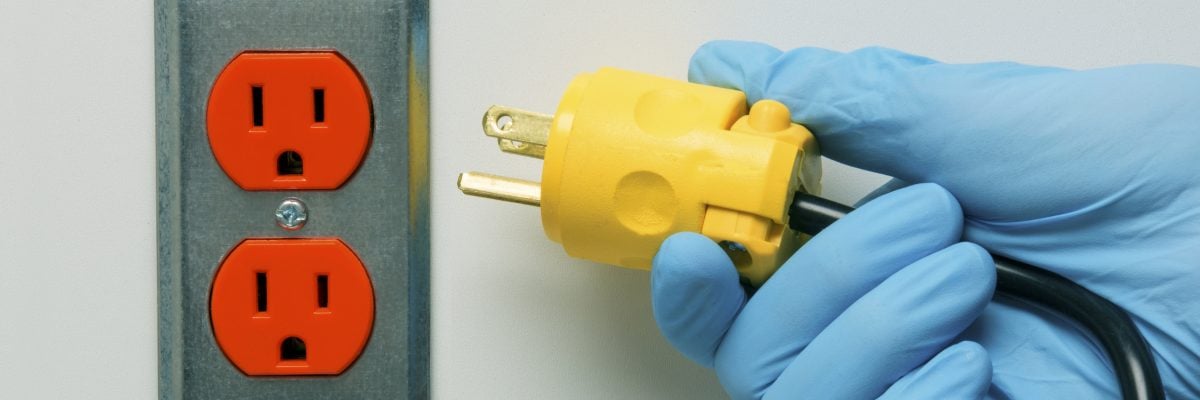
On February 25, 1990, twenty-six-year-old Terri Schiavo collapsed at home and suffered oxygen deprivation. Paramedics rushed her to the hospital but, while they were able to save her life, Schiavo was left in a persistent vegetative state (PVS) until she died from having her feeding tube removed in 2005.
No one would deny that Terri was a person prior to her collapse, but did she lose her personhood once she became brain damaged?
Lawyer and author Wesley J. Smith and bioethicist Bill Allen debated this on Court TV Online. At one point Smith asked, “[D]o you think Terri is a person?” to which Allen responded, “No, I do not. I think having awareness is an essential criterion for personhood. Even minimal awareness would support some criterion of personhood, but I don’t think complete absence of awareness does.”
Many people share Allen’s view, believing that humans in persistent vegetative states are not persons anymore—and so they can be deprived of basic necessities like food or water in order to end their lives. But here are three questions you should ask those who defend euthanizing disabled people in these conditions:
1. Would you bury a breathing body?
When a person stops existing, we say that person has died. Normally, when a person has died, what remains is a corpse. However, if personhood is not an essential property of human beings, then there can be cases where a person has died but the “remains” left behind is a living, breathing human body.
A corpse should not be desecrated, but there is no obligation to treat it like a human being. It is not a human being but the remains of a human being. So why not treat someone in an irreversible coma like a corpse and load him into an incinerator? Why not bury him in a grave as their chest rises and falls until the dirt that covers his body causes his breathing to stop?
A person who did this might try to take solace in the assumption the person can’t feel anything, but to watch the spasms that living body would undergo as the lungs failed would probably sicken most people. They would see that this is not a corpse that is being buried, but a a disabled person who is being killed by asphyxiation.
Consider the case of Schiavo in particular. Over the fifteen years after her collapse, she did not require the use of a ventilator (except for immediately following the collapse) and was able to breathe on her own. In a sense, she simply required the care a baby would require—food, clothing, shelter, and someone to oversee the administration of this care. To deprive her of food and water just because she was disabled was to bring about her death not by some underlying disease but by depriving her of that which all humans require; it was to bring about her death by dehydration, a fate no human should have to endure.
2. Which disabled people deserve to be protected?
To those who support euthanizing people in persistent vegetative states, you could pose this question: “Should we help all disabled people no matter what disability they have? If not, on what basis do we decide who’s worth helping and who’s worth killing? Wouldn’t that result in us making a judgment call on the value of another’s life?”
Most people, being committed to justice and fairness, won’t say there are some disabled people we shouldn’t help. You can then ask, “What does it mean to be disabled or have a disability?” Most people, when comparing paraplegia, blindness, deafness, or mobility impairments would say that a disability is “something that keeps you from functioning like the majority of people.”
These could be physical disabilities that keep someone from acting a certain way or mental disabilities that keep someone from thinking a certain way. Normally, when someone has a disability we are compassionate towards him and try to accommodate his inability to function. For example, we make handicapped parking accessible or we put up signs in braille that the blind can read. Keeping this in mind, when someone is in a coma he is like individuals with other handicaps—he cannot function as the majority can. Shouldn’t we show such individuals compassion and make accommodations in their condition rather than say they aren’t persons?
3. How do you know they won’t wake up?
In 1989, a stampede at the Hillsborough Soccer Stadium in Sheffield England left ninety-six people dead and hundreds injured. One of the injured was Tony Bland, who went into a PVS and was later killed through the removal of nutrition. But one year later, Andrew Devine, another injured fan who also ended up in a PVS, began to show signs of awareness. In 2014 he was healthy enough to attend the 30th anniversary of the Hillsborough disaster.
Two years prior to Terri Schiavo collapsing, a twelve-year-old boy in South Africa, Martin Pistorius, became became so ill that he lived in a “virtual coma” for over a decade, incapable of communicating to others that he was aware inside. But one day, in 2001, the tender compassion of a caregiver interacting with Pistorius would lead the woman to think her patient was indeed aware and could communicate if creative ways were developed to do so.
Today Pistorius is happily married and has authored a book about his journey. Although for a time his need for basic care was similar to Schiavo’s, his outcome was very different than hers. But if we valued all humans as persons, regardless of current or perceived future abilities, then perhaps their endings would have been more alike.
In a radio interview about his ordeal, Pistorius reflected, “I think being seen and having another person validate your existence is incredibly important.” Powerful words for us and for anyone who thinks that disabilities can erase a person’s basic human worth.



